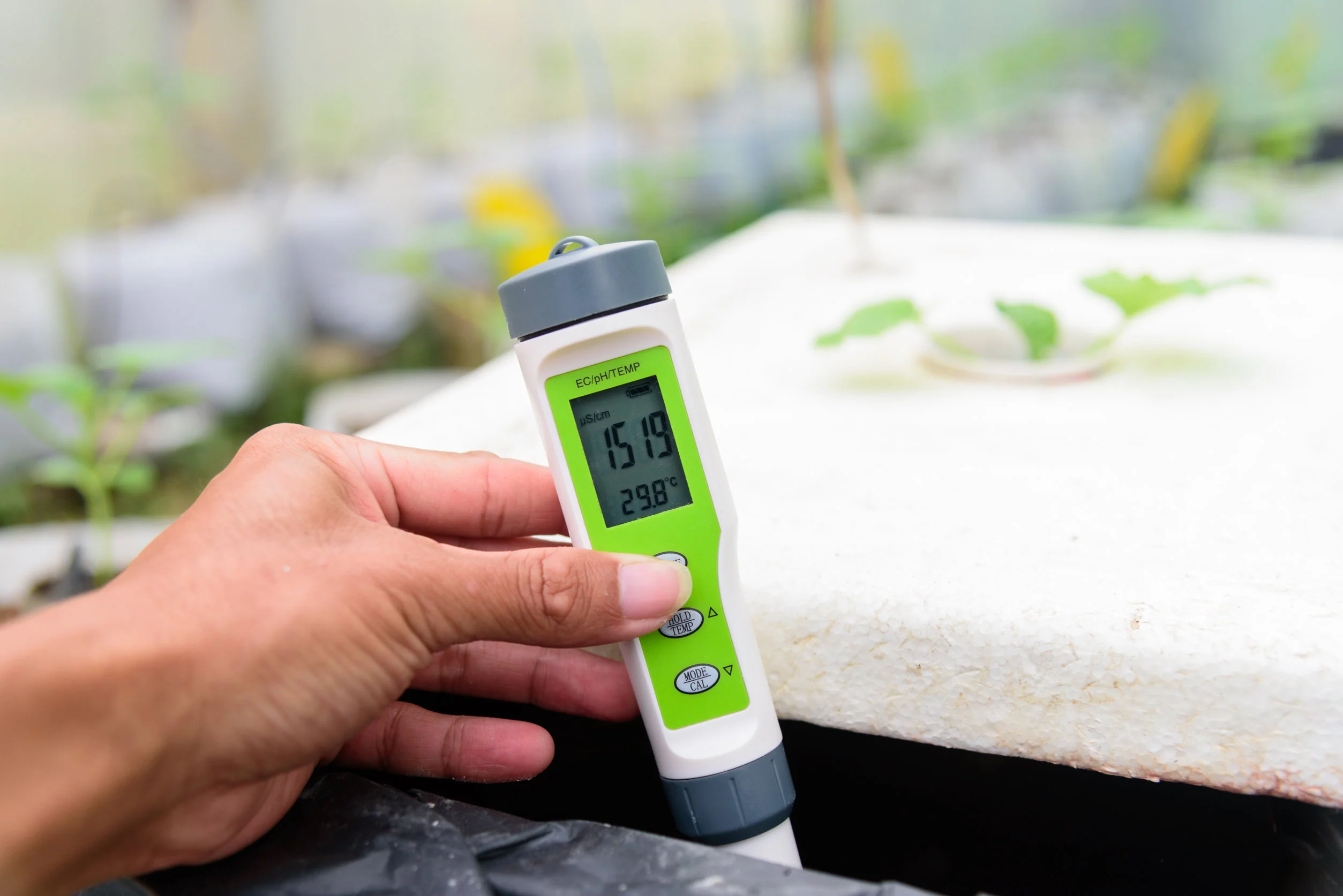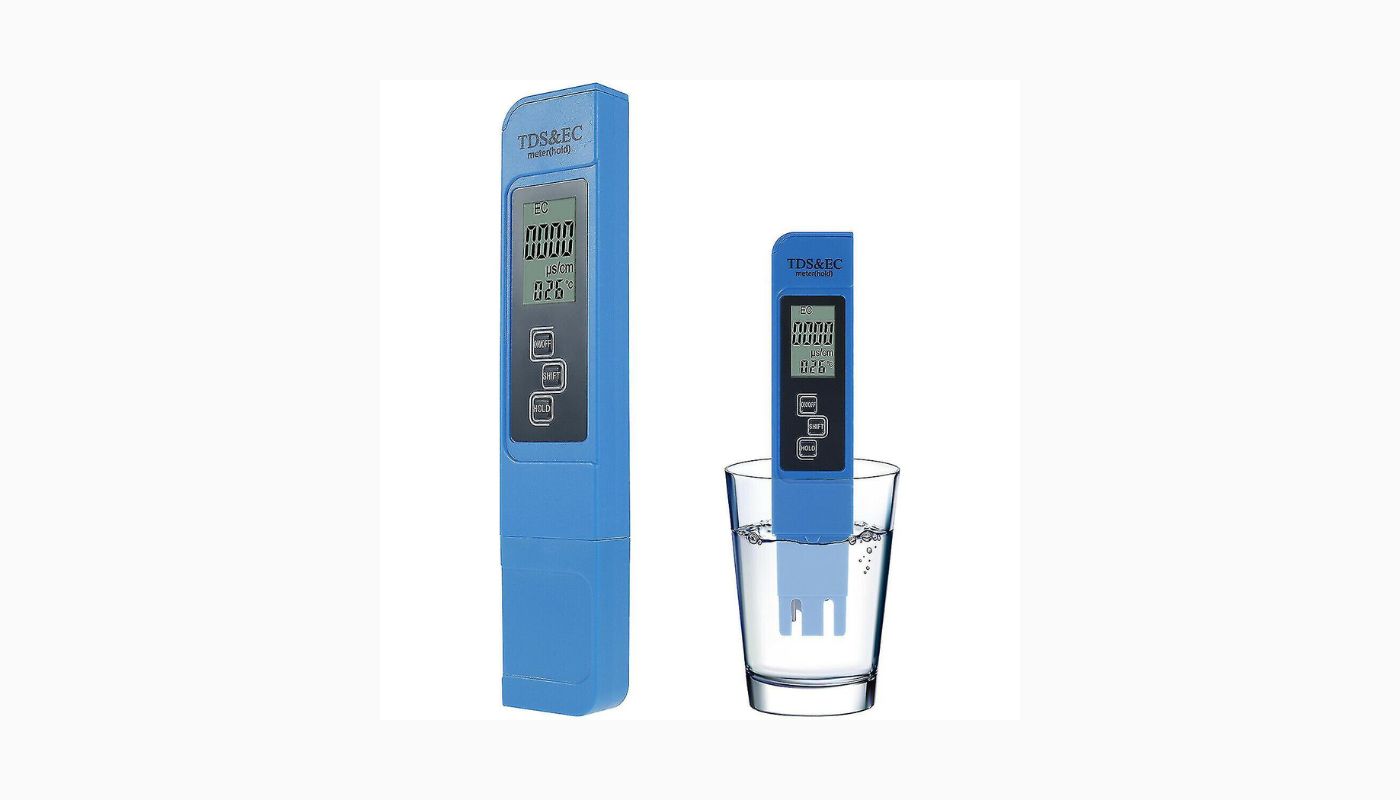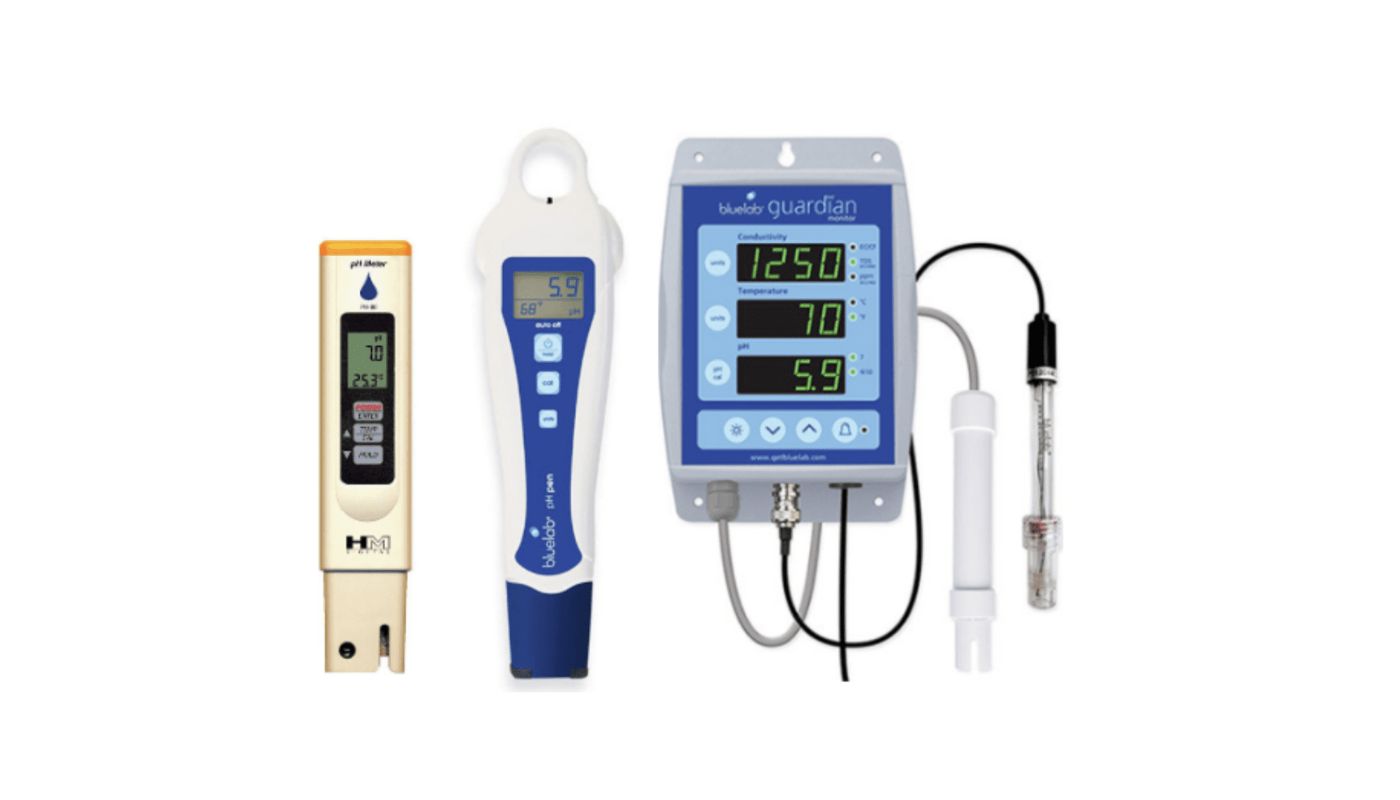Home>Gardening Tips and Tricks>Eco-Friendly Gardening>What Is EC In Hydroponics And Why It’s Important


Eco-Friendly Gardening
What Is EC In Hydroponics And Why It’s Important
Modified: January 22, 2024
Discover the benefits of eco-friendly gardening with our guide on what EC levels to maintain for hydroponics. Start growing your plants the sustainable way today.
(Many of the links in this article redirect to a specific reviewed product. Your purchase of these products through affiliate links helps to generate commission for Chicagolandgardening.com, at no extra cost. Learn more)
Table of Contents
Introduction
Welcome to the world of eco-friendly gardening! In today’s era of increasing environmental awareness, many gardeners are turning to sustainable practices to reduce their carbon footprint and promote the health of the planet. One such practice gaining popularity is eco-friendly gardening, which focuses on minimizing synthetic inputs and maximizing natural resources.
Within the realm of eco-friendly gardening, one approach that stands out is hydroponics. Hydroponics is a soilless cultivation method that allows plants to grow in nutrient-rich water solutions. It offers numerous benefits such as water conservation, space efficiency, and reduced reliance on chemical fertilizers.
While hydroponics itself is an environmentally friendly technique, optimizing its performance requires careful monitoring of various factors, one of which is electrical conductivity (EC). In this article, we explore the significance of EC in hydroponics, its measurement, and how to adjust it for optimal plant growth.
So, let’s dive in and discover the world of EC in eco-friendly hydroponic gardening!
What is EC?
Electrical Conductivity (EC) is a measurement of the ability of a substance, such as water or a nutrient solution, to conduct an electric current. In hydroponics, EC is used to evaluate the concentration of dissolved salts and minerals, also known as total dissolved solids (TDS), in the nutrient solution.
EC is measured using a conductivity meter, also known as an EC meter or a TDS meter. This device measures the electrical conductance of the solution and displays it as an EC value in units of millisiemens per centimeter (mS/cm) or microsiemens per centimeter (µS/cm).
It’s important to note that EC is not a direct measurement of nutrients in the solution. Rather, it provides an indication of the overall concentration of dissolved salts, which includes essential nutrients like nitrogen, phosphorus, and potassium, as well as other minerals.
EC values can vary depending on the type and concentration of nutrients in the solution, as well as the quality of the water used. Different types of crops have different EC requirements, and maintaining the appropriate level is crucial for ensuring optimal plant growth and development.
By regularly monitoring EC levels, hydroponic gardeners can assess the nutrient status of their plants and make adjustments accordingly. This helps prevent nutrient deficiencies or toxicities, which can lead to stunted growth, poor yields, and various other plant health issues.
Now that we have a basic understanding of what EC is and its relevance to hydroponics, let’s explore why it is crucial in eco-friendly gardening.
Importance of EC in Hydroponics
Monitoring and adjusting EC levels in hydroponics is crucial for several reasons. Let’s explore the key importance of EC in eco-friendly hydroponic gardening:
1. Nutrient Balance:
EC helps maintain a proper balance of nutrients in the hydroponic solution. By measuring the EC, gardeners can ensure that the concentration of essential nutrients remains within the optimal range for each specific crop. This allows plants to access the nutrients they need for healthy growth and development.
2. Preventing Nutrient Imbalances:
High or low EC levels can indicate a nutrient imbalance in the solution. High EC values may suggest an excess of nutrients, which can lead to nutrient toxicity and damage plant roots. Conversely, low EC values may indicate nutrient deficiencies, resulting in stunted growth and diminished yields. By monitoring and adjusting EC, hydroponic gardeners can prevent these nutrient imbalances and maintain optimal growing conditions.
3. Water Efficiency:
EC monitoring helps promote water efficiency in hydroponics. By measuring the EC of the nutrient solution runoff, gardeners can assess whether the plants are using the provided nutrients effectively. If the EC of the runoff is too high, it indicates that the plants are not absorbing the nutrients efficiently, potentially leading to nutrient wastage. Adjusting the EC allows gardeners to optimize nutrient uptake, reducing water and nutrient wastage.
4. Plant Health Monitoring:
EC levels serve as an indicator of plant health in hydroponic systems. If the EC values fluctuate significantly, it may indicate an issue with nutrient uptake or nutrient availability. By regularly monitoring and adjusting EC, gardeners can identify and address any potential problems early, promoting healthier and more robust plant growth.
5. Crop-Specific Requirements:
Different types of plants have varying nutritional demands. EC monitoring allows gardeners to tailor the nutrient solution to meet the specific needs of each crop. By adjusting EC levels based on crop requirements, gardeners can optimize nutrient availability, leading to better growth, development, and higher yields.
In summary, maintaining proper EC levels in hydroponics plays a vital role in achieving optimal plant growth and maximizing the efficiency of resource utilization. By understanding the importance of EC, eco-friendly gardeners can create a balanced and sustainable environment for their hydroponic crops.
Factors Affecting EC in Hydroponic Systems
Several factors can impact the electrical conductivity (EC) levels in hydroponic systems. Understanding these factors is essential for maintaining the optimal nutrient balance for plant growth. Let’s delve into the key factors that affect EC:
1. Nutrient Solution Concentration:
The concentration of nutrients in the hydroponic solution is a primary factor influencing EC. The amount of nutrients added to the solution directly affects the EC levels. Increasing the concentration of nutrient solutions will raise the EC, while diluting them will lower it. It is crucial to follow appropriate nutrient protocols and recommendations to avoid imbalances and ensure the correct nutrient concentration for optimal plant growth.
2. Water Quality:
The quality of the water used in hydroponics can significantly impact EC. Water sources with high mineral content, known as hard water, can have a naturally higher EC. Conversely, purer water sources like reverse osmosis (RO) water may have a lower EC. Understanding the EC of the water source is crucial for accurately determining and adjusting the overall EC of the nutrient solution.
3. Nutrient Uptake and Plant Transpiration:
The rate at which plants uptake nutrients and transpire water can affect the EC levels in the root zone. As plants absorb water through their roots, they also take up dissolved nutrients, increasing the EC of the root environment. Additionally, the process of transpiration, where plants lose water through their leaves, can concentrate nutrients in the root zone, further affecting EC levels. Monitoring and adjusting EC help ensure that nutrient uptake and transpiration are balanced to maintain optimal levels for plant growth.
4. pH Levels:
pH levels can impact EC in hydroponics. pH is a measure of the acidity or alkalinity of a solution. It affects nutrient availability and uptake by plants. Deviations from the optimal pH range can impact the solubility and accessibility of nutrients, which in turn affects the EC levels. Maintaining the appropriate pH range for specific hydroponic crops is crucial for optimal nutrient uptake and EC balance.
5. Temperature:
Temperature plays a role in EC levels as well. Higher temperatures can increase the solubility of minerals and salts in the nutrient solution, leading to higher EC values. Conversely, cooler temperatures can result in lower solubility and lower EC values. Monitoring and adjusting EC based on temperature fluctuations can help maintain the appropriate nutrient levels for plant growth.
By understanding and managing these factors, hydroponic gardeners can maintain optimal EC levels in their systems, ensuring the right balance of nutrients and promoting healthy plant growth.
Measuring EC in Hydroponics
To maintain optimal nutrient levels in hydroponics, it is essential to accurately measure the electrical conductivity (EC) of the nutrient solution. Measuring EC allows for precise monitoring and adjustments to ensure the right nutrient balance for plants. Here are the key methods for measuring EC in hydroponics:
1. EC Meters:
The most common and accurate method for measuring EC is by using an EC meter, also known as a conductivity meter or a TDS meter. EC meters work by passing an electric current through the solution and measuring the resistance encountered. The more conductive the solution, the higher the EC value displayed on the meter. These meters are widely available and provide quick and reliable measurements.
2. Calibration and Usage:
Before using an EC meter, it is crucial to calibrate it properly using known calibration standards. This ensures accurate readings. With a calibrated meter, immerse the electrodes into the nutrient solution, making sure they are fully submerged. Allow the meter to stabilize, and then read the EC value displayed. It is recommended to take multiple readings and average them for increased accuracy.
3. Monitoring Runoff:
In addition to measuring EC in the nutrient solution, monitoring the runoff can provide valuable information about nutrient uptake and potential imbalances. Collecting a sample of the runoff allows for testing and comparison against the initial EC value. If the runoff EC is significantly different from the initial EC, it can indicate whether the plants are adequately absorbing and utilizing the nutrients.
4. Target EC Ranges:
Different crops have specific EC requirements for optimal growth. It is essential to research and understand the target EC ranges for the specific crops being grown. These ranges can vary depending on the crop’s growth stage. By regularly measuring and adjusting the EC to maintain it within the target range, gardeners can provide the ideal nutrient levels for healthy plant growth.
5. Considerations for Hydroponic Systems:
When measuring EC in various hydroponic systems such as nutrient film technique (NFT), deep water culture (DWC), or Dutch bucket systems, it is important to consider the specific requirements of each system. Factors such as nutrient circulation, water flow rate, and plant density can impact nutrient uptake and EC levels. Regular monitoring and adjustments based on these considerations are necessary for optimal EC management in different hydroponic setups.
By utilizing the right tools, calibrating the equipment, and monitoring EC regularly, hydroponic gardeners can ensure they are providing the correct nutrient balance for their plants and promoting healthy growth in their eco-friendly gardens.
EC Levels for Different Hydroponic Crops
Each hydroponic crop has specific nutrient requirements, and maintaining the appropriate electrical conductivity (EC) levels is crucial for ensuring optimal growth and yields. Here is a general guideline for the recommended EC levels for some common hydroponic crops:
1. Leafy Greens:
Leafy greens like lettuce, spinach, and kale prefer lower EC levels compared to other crops. The recommended EC range for these crops usually falls between 0.8 to 1.2 mS/cm or 800 to 1200 µS/cm. These crops have shorter cultivation periods and require less nutrient concentration in the solution.
2. Herbs and Culinary Plants:
Herbs like basil, cilantro, and parsley, as well as culinary plants like chives and mint, generally thrive in slightly higher EC levels. The recommended EC range for these crops is typically around 1.2 to 1.6 mS/cm or 1200 to 1600 µS/cm. These crops benefit from a slightly stronger nutrient solution.
3. Fruiting Vegetables:
Fruiting vegetables, such as tomatoes, peppers, and cucumbers, have higher nutrient requirements to support fruit development. The recommended EC range for these crops varies depending on the growth stage. In the early stages, a range of 1.6 to 2.0 mS/cm or 1600 to 2000 µS/cm is suitable. As the plants enter the flowering and fruiting stage, the EC can be gradually increased to 2.2 to 3.0 mS/cm or 2200 to 3000 µS/cm.
4. Root Vegetables:
Root vegetables like carrots, radishes, and beets have moderate nutrient requirements. The recommended EC range for these crops generally falls between 1.2 to 1.6 mS/cm or 1200 to 1600 µS/cm. It is important to monitor the nutrient solution carefully to promote healthy root development and maximize yield.
5. Fruit-bearing Plants:
Fruit-bearing plants such as strawberries and melons have varying nutrient requirements depending on the specific variety. However, a general guideline is to start with an EC range of 1.6 to 2.0 mS/cm or 1600 to 2000 µS/cm during the vegetative stage and increase it to 2.2 to 2.8 mS/cm or 2200 to 2800 µS/cm during the flowering and fruiting stage.
It is important to note that these are general recommendations, and crop-specific guidelines should be followed for optimal results. Factors such as cultivar, growth stage, environmental conditions, and the specific hydroponic system used can also influence the ideal EC range for each crop.
Regular monitoring of EC levels, coupled with observation of plant health and growth, will help hydroponic gardeners make the necessary adjustments to maintain the ideal EC levels for their chosen crops.
Adjusting EC in Hydroponics
Maintaining the optimal electrical conductivity (EC) levels in a hydroponic system is essential for providing plants with the right balance of nutrients. Here are some methods for adjusting EC in hydroponics:
1. Dilution:
If the EC of the nutrient solution is too high, dilution with water is a simple and effective method to lower it. Gradually adding water to the solution while monitoring the EC allows for gradual adjustments. It is important to use quality water with a balanced pH and EC to avoid further nutrient imbalances.
2. Concentration:
If the EC is too low, increasing the nutrient concentration in the solution is necessary. This can be achieved by adding more concentrated nutrient solution or adjusting the nutrient dosing to achieve the desired EC level. Regular monitoring and adjustment are required to avoid over-fertilization and nutrient imbalances.
3. Nutrient Supplementation:
Adjusting EC can also be done by supplementing the nutrient solution with specific nutrients. This method is useful when there is a specific deficiency in the nutrient solution. By adding the lacking nutrient in the appropriate concentration, the overall EC can be raised while addressing the deficiency.
4. pH Adjustment:
pH levels can impact the solubility and availability of nutrients, which in turn affects EC. If the pH is too high or too low, it can impact nutrient uptake and subsequent EC levels. Adjusting the pH to the optimal range for hydroponic crops ensures proper nutrient absorption and helps maintain the desired EC levels.
5. Crop-specific Adjustments:
Different crops have varying nutrient requirements throughout their growth stages. Adjusting the EC based on the crop’s specific needs is essential. For example, during the vegetative stage, a lower EC may be required, while during the fruiting stage, a higher EC might be necessary. Regular monitoring and adjustment according to the crop’s growth stage promote optimal plant growth and development.
It is important to make gradual adjustments to the EC levels to avoid shocking the plants. Sudden and drastic changes in EC can stress the plants and lead to nutrient imbalances. Regular monitoring, observation of plant health, and responsiveness to any signs of nutrient deficiencies or toxicities are crucial in adjusting EC effectively.
Remember, the goal is to provide the plants with the ideal nutrient balance to support healthy growth and maximize yields in an environmentally friendly manner.
Common EC-related Problems in Hydroponics
While maintaining the appropriate electrical conductivity (EC) levels is crucial for successful hydroponic gardening, there can be certain EC-related problems that gardeners may encounter. Identifying and addressing these issues is essential for maintaining healthy plants and optimal growth. Here are some common EC-related problems in hydroponics:
1. Nutrient Imbalances:
Incorrect EC levels can lead to nutrient imbalances in the nutrient solution. A high EC may indicate an excessive concentration of nutrients, leading to nutrient toxicity and potential damage to plant roots. Conversely, a low EC may indicate nutrient deficiencies, resulting in stunted growth and poor plant health. Regular monitoring and adjustment of EC can help prevent these imbalances and promote healthy nutrient uptake.
2. pH Fluctuations:
Inadequate EC levels can affect the pH balance in the hydroponic system. pH levels are important for nutrient availability and absorption. Fluctuations in pH can impact the solubility of nutrients, leading to nutrient lockout or deficiencies. Monitoring both EC and pH levels and ensuring they are within the appropriate ranges for specific crops is crucial for proper nutrient uptake and overall plant health.
3. Nutrient Wastage:
If the EC levels are too high, it may indicate an excessive concentration of nutrients in the solution. This can result in nutrient wastage, as plants may not be able to absorb and utilize the excess nutrients. Monitoring the runoff EC can help assess nutrient uptake and avoid unnecessary waste, ensuring efficient use of resources in the hydroponic system.
4. Altered Plant Physiology:
Imbalanced EC levels can have a direct impact on the physiological processes of plants. High EC levels can stress plants and affect their water uptake, resulting in wilting and reduced growth. Low EC levels can lead to nutrient deficiencies, affecting leaf health, color, and overall plant vigor. Maintaining optimal EC levels is crucial for supporting proper plant physiology and maximizing growth and yields.
5. Inconsistent Crop Performance:
If EC levels are not properly adjusted, it can result in inconsistent crop performance. Different crops have varying nutrient requirements throughout their growth stages. Failure to maintain the appropriate EC levels can lead to slower growth, reduced yields, or even crop failures. Regularly monitoring and adjusting EC based on crop-specific needs promotes consistent and optimal crop performance.
Addressing these common EC-related problems requires careful monitoring, timely adjustments, and a good understanding of the nutrient requirements of specific hydroponic crops. By maintaining proper EC levels, hydroponic gardeners can ensure healthy plants, maximize yields, and create a sustainable and efficient gardening environment.
Conclusion
Eco-friendly gardening practices, such as hydroponics, offer a sustainable and efficient way to cultivate plants while minimizing environmental impact. Within hydroponics, maintaining the appropriate electrical conductivity (EC) levels is crucial for providing plants with the right balance of nutrients for optimal growth and development.
By understanding and monitoring EC, hydroponic gardeners can ensure the proper nutrient balance in the solution, preventing nutrient imbalances and promoting healthy plant growth. Factors such as nutrient solution concentration, water quality, temperature, and pH levels all influence EC and must be carefully managed to maintain the desired levels.
Measuring EC using specialized meters and monitoring runoff can provide valuable insights into nutrient uptake and potential imbalances. By adjusting EC through dilution, concentration, nutrient supplementation, and pH adjustment, gardeners can fine-tune the nutrient solution and optimize plant health and performance.
Different hydroponic crops have varying EC requirements throughout their growth stages. By following crop-specific guidelines and regularly adjusting EC, gardeners can provide the ideal nutrient levels for each crop, promoting healthy growth, maximum yields, and overall success in their eco-friendly gardens.
However, it is important to be mindful of common EC-related problems, such as nutrient imbalances, pH fluctuations, nutrient wastage, altered plant physiology, and inconsistent crop performance. Regular monitoring, adjustments, and awareness of these issues are crucial for maintaining healthy plants and overcoming potential challenges in hydroponic systems.
In conclusion, by utilizing proper EC management techniques and considering the unique needs of different hydroponic crops, gardeners can create successful and sustainable eco-friendly gardens that thrive with optimal nutrient levels, contributing to a greener and more environmentally conscious world.






